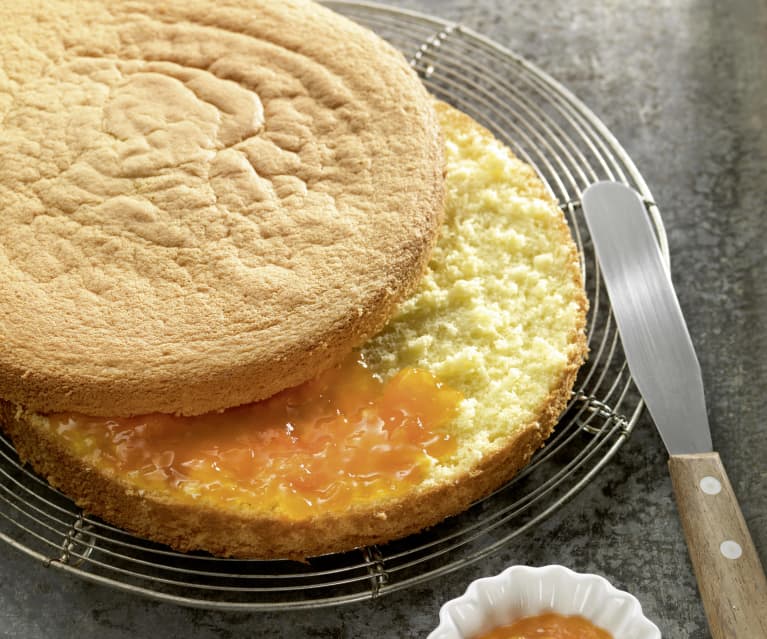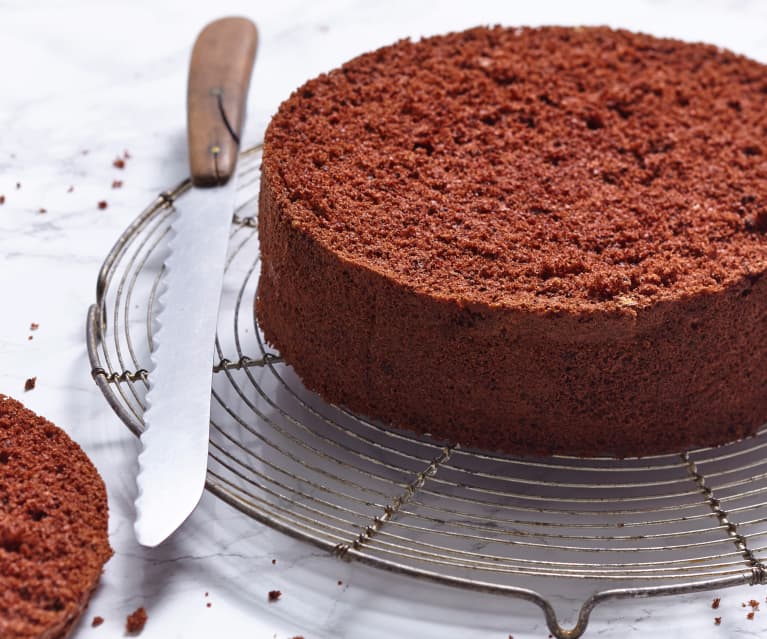Master The Art Of Génoise With Thermomix: A Sweet Journey To Perfection
Imagine this: you're standing in your kitchen, surrounded by the sweet aroma of butter, sugar, and vanilla. The air is filled with anticipation as you prepare to bake a génoise—a delicate sponge cake that’s the foundation of countless desserts. But here’s the twist—you’re using a Thermomix, the kitchen wizard that makes baking feel like a breeze. If you’ve ever wondered how to perfect this classic French cake with modern technology, you’re in the right place. Génoise Thermomix is not just a recipe; it’s an experience.
Let’s face it, baking can sometimes feel overwhelming, especially when you’re dealing with delicate recipes like génoise. But fear not, because the Thermomix has got your back. With its precise temperature control and powerful mixing capabilities, creating a génoise has never been easier. Whether you're a seasoned baker or a complete newbie, this article will guide you through every step, ensuring you achieve that light, fluffy texture we all crave.
In this journey, we’ll dive deep into the world of génoise Thermomix, exploring everything from the basics to advanced tips. By the end of this article, you’ll be equipped with the knowledge and confidence to bake like a pro. So grab your Thermomix, roll up your sleeves, and let’s get baking!
Table of Contents
- What is Génoise?
- Why Thermomix is Perfect for Génoise
- Basic Ingredients for Génoise
- Step-by-Step Guide to Making Génoise with Thermomix
- Common Mistakes to Avoid
- Tips for Achieving Perfection
- Delicious Variations of Génoise
- Troubleshooting Your Génoise
- Healthier Options for Génoise
- Conclusion: Your New Baking Adventure Awaits
What is Génoise?
Génoise, pronounced zhay-NOHZH, is a French sponge cake that originated in the city of Genoa, Italy. It’s known for its light, airy texture and rich flavor, making it a favorite base for countless desserts. Unlike traditional sponge cakes, génoise uses whole eggs instead of separating them, and it often includes butter, which gives it a luxurious taste.
This classic cake is versatile and can be used in a variety of ways. Think layer cakes, rolled cakes, or even as a base for trifles and parfaits. Its delicate nature makes it a perfect canvas for creativity in the kitchen. And with the help of a Thermomix, achieving this perfection has never been easier.
Why Génoise is Special
So, what makes génoise so special? It’s all about the texture. The combination of eggs, sugar, flour, and butter creates a cake that’s both light and moist. The key to success lies in the technique—whipping the eggs and sugar to just the right consistency, folding in the flour gently, and baking at the perfect temperature. With Thermomix, you can achieve these precise conditions without breaking a sweat.
Why Thermomix is Perfect for Génoise
The Thermomix is a kitchen powerhouse that combines multiple functions into one sleek machine. For baking enthusiasts, it’s a game-changer. Here’s why the Thermomix is perfect for making génoise:
- Precise Temperature Control: The Thermomix allows you to control the temperature with pinpoint accuracy, ensuring your eggs and sugar are whipped to perfection.
- Powerful Mixing: Its powerful motor can handle everything from delicate mixes to heavy doughs, making it ideal for génoise’s light texture.
- Time-Saving Features: With its built-in timer and scale, you can focus on other aspects of your baking without worrying about measurements or timing.
Whether you’re a busy parent or a professional baker, the Thermomix streamlines the baking process, giving you more time to enjoy the fruits of your labor.
Basic Ingredients for Génoise
Before you dive into the world of génoise Thermomix, let’s take a look at the basic ingredients you’ll need:
- Eggs: Fresh, room-temperature eggs are essential for achieving the right texture.
- Sugar: Granulated sugar is the best choice for génoise, as it dissolves easily during the whipping process.
- All-Purpose Flour: This is the base for your génoise, providing structure without weighing it down.
- Butter: Unsalted butter adds richness and flavor to your cake.
- Vanilla Extract: A touch of vanilla enhances the overall flavor profile.
These simple ingredients come together to create a masterpiece, thanks to the Thermomix’s precise control and powerful mixing capabilities.
Step-by-Step Guide to Making Génoise with Thermomix
Now that you have your ingredients ready, let’s walk through the steps to create the perfect génoise with your Thermomix:
Step 1: Prepare Your Ingredients
Start by gathering all your ingredients and ensuring they’re at room temperature. This is crucial for achieving the right texture. Place your eggs and sugar in the Thermomix bowl and set it aside for a moment.
Step 2: Whisk the Eggs and Sugar
Using the Thermomix’s whisk attachment, whip the eggs and sugar on speed 37 for about 5 minutes. The mixture should become pale and thick, almost like a ribbon when you lift the whisk. This step is where the magic happens, as the air incorporated into the mixture will give your génoise its light texture.
Step 3: Add the Flour
With the Thermomix still running on a low speed, slowly add the flour through the lid. This gentle incorporation ensures that the air you’ve worked so hard to incorporate doesn’t escape. Mix for about 30 seconds, just until the flour is fully incorporated.
Step 4: Melt the Butter
In a separate bowl, melt your butter until it’s just liquid. You don’t want it too hot, as this could deflate your mixture. Once melted, gently fold the butter into the batter using a spatula. This step adds richness and flavor to your génoise.
Step 5: Bake to Perfection
Pour your batter into a prepared cake tin and bake in a preheated oven at 180°C (350°F) for about 20-25 minutes. The génoise is ready when it springs back to the touch and a toothpick inserted in the center comes out clean.
Common Mistakes to Avoid
Even the best bakers make mistakes sometimes. Here are a few common pitfalls to watch out for when making génoise with Thermomix:
- Overmixing: Overmixing can deflate the air you’ve worked so hard to incorporate, resulting in a dense cake. Be gentle when folding in the flour and butter.
- Incorrect Temperature: Both the eggs and the melted butter should be at the right temperature. Too cold or too hot can affect the texture of your génoise.
- Not Preheating the Oven: A cold oven can lead to uneven baking, so always make sure it’s preheated before you start.
Avoid these mistakes, and you’ll be well on your way to baking a perfect génoise every time.
Tips for Achieving Perfection
Here are a few additional tips to help you achieve génoise perfection:
- Use Fresh Ingredients: Fresh eggs and high-quality flour make a noticeable difference in the final product.
- Don’t Overfill the Tin: Leave enough room for the génoise to rise. Overfilling can lead to a collapsed cake.
- Let It Cool: Allow your génoise to cool completely before removing it from the tin. This prevents it from breaking or sticking.
With these tips in mind, you’ll be able to bake a génoise that’s as light and fluffy as a cloud.
Delicious Variations of Génoise
Once you’ve mastered the basic génoise, why not experiment with some variations? Here are a few ideas to get you started:
- Chocolate Génoise: Add cocoa powder to your flour for a rich, chocolatey twist.
- Lemon Génoise: Zest a lemon and add it to your batter for a refreshing citrus flavor.
- Almond Génoise: Replace some of the flour with ground almonds for a nutty, delicious variation.
The possibilities are endless, so don’t be afraid to get creative in the kitchen!
Troubleshooting Your Génoise
Sometimes, even with the best intentions, things don’t go as planned. Here’s how to troubleshoot common issues with your génoise:
- Dense Texture: This usually happens when the batter is overmixed or the eggs aren’t whipped enough. Make sure to whip the eggs and sugar until they’re light and fluffy.
- Collapsed Cake: A collapsed génoise can be caused by overfilling the tin or not letting it cool properly. Follow the tips mentioned earlier to avoid this issue.
With a little practice and patience, you’ll soon be troubleshooting like a pro.
Healthier Options for Génoise
For those looking to make their génoise a bit healthier, here are a few substitutions you can try:
- Whole Wheat Flour: Replace some of the all-purpose flour with whole wheat flour for added fiber.
- Coconut Oil: Use coconut oil instead of butter for a dairy-free option that’s still rich in flavor.
These small changes can make a big difference in the nutritional value of your génoise without sacrificing taste.
Conclusion: Your New Baking Adventure Awaits
And there you have it—a comprehensive guide to mastering génoise with Thermomix. From understanding the basics to troubleshooting common issues, we’ve covered everything you need to know to bake like a pro. Remember, practice makes perfect, so don’t be discouraged if your first attempt doesn’t turn out exactly as planned. Keep experimenting, and soon you’ll be creating génoise masterpieces that will impress even the most discerning palates.
So, what are you waiting for? Grab your Thermomix, gather your ingredients, and embark on this sweet journey to perfection. And don’t forget to share your creations with the world—after all, baking is best enjoyed with others. Happy baking!

Number cake 100 génoise Goût chocolatvanille YouTube

Génoise Cookidoo® the official Thermomix® recipe platform

Génoise au chocolat Cookidoo® the official Thermomix® recipe platform